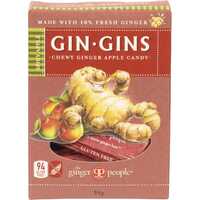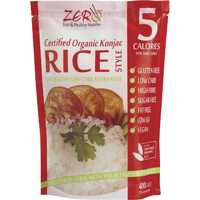The world is full of amazing foods. From exotic fruits to gourmet delicacies, there are so many interesting textures and flavours to enjoy. When you take a close look at how the world eats, however, it's clear that some foods are more important than others. While consumption habits vary widely from place to place, and availability depends on the seasons, a few basic staples are responsible for the vast majority of the global diet.
In this article, we'll look at how the world gets its energy. We'll review common food staples across the globe, including bread, rice, pasta, and noodles. The nutritional value of major staples will be presented to help you incorporate these important foods into your diet.
What is a Food Staple?
A food staple is an item that makes up the dominant part of a population’s diet. Staples are eaten on a regular basis, with many of the foods on this list eaten daily or multiple times a day. Food staples may be simple, but they supply a significant proportion of a person’s nutritional needs. While just a few staples make up the global diet, there are significant regional variations due to historical, climate, and cultural differences. For example, while wheat-based foods are common in Europe, other parts of the world rely more heavily on rice and corn.
According to figures from National Geographic, there are more than 50,000 edible plants in the world. Despite this impressive number, however, just 15 of these plants are responsible for 90% of the world's food energy intake. This is an incredible statistic, and it highlights how crucial certain plants are to human survival. The plants already mentioned are the most popular by far, with rice, corn, and wheat providing roughly two-thirds of our energy.
To be called a staple, the food in question needs to meet some basic criteria. First and foremost, it must be relatively easy to grow in a range of climate conditions. Secondly, and somewhat related, it must be inexpensive to grow, store, and purchase. Last but not least, food staples must provide sufficient calories for energy production. While they're not the most nutritionally rich ingredients, staples provide quick-release energy in the form of carbohydrates, which are broken down by the body into glucose.
It's important to note that food staples are not enough by themselves. While they are somewhat nutritious, other ingredients are needed to stay fit and healthy. To get the full range of nutrients you need, you must augment your diet with fruits, vegetables, animal-based proteins, or healthy plant-based alternatives. Cereal grains are the world's most common food staples, and vegetable root tubers are also included. We have reliable access to all of these ingredients, and like always, balanced consumption is the key to good health.
What Are Grains?
Grains are hard dry fruits that come with or without a hull layer. These tiny simple foods may be unassuming, but they're absolutely crucial to human survival. Grain crops are grown all over the world in a variety of conditions, and they feed the vast majority of the world's population. Grains are very durable before and after harvest, which is a big reason they're so popular.
There are two main categories of grains: cereals, which belong to the grass family Poaceae, and legumes of the bean family Fabaceae. Most of the food staples mentioned in this article are cereals, which combine endosperm, germ, and bran layers in their unprocessed form. Along with the staple trio of wheat, rice, and corn, other popular cereals include rye, oats, barley, and millet. While foods such as buckwheat, quinoa, and chia are often called cereals, they're actually pseudocereals, as they come from different plant families.
What Are Root Tubers?
Other than grains, which make up the vast majority of our food, some vegetables are also recognised as staples. A relatively small but significant portion of humanity's energy needs comes from root tubers, at 5.3% of our total energy intake. Roots are the same as tubers, but these terms are often used to describe different plants. Grains don't grow well in all climates, with root tubers generally popular in areas where they find it difficult. Root crops such as radish, carrots and turnips are not the same as root tubers.
Cassava, also called yuca or manioc, is the most common tuber. It makes up 2.6% of global calorie intake, mostly in South America and Africa. Potatoes are the next most popular, making up 1.7% of the world’s calorie consumption. While potatoes also originated in South America, today they're mostly eaten in the northern hemisphere. The humble potato first came to Europe in the 16th century, and it became a common food source soon after. There are many other tubers eaten around the world, including yams and sweet potatoes.
Food Staples Around the World
The food staples of a particular area are mostly plants that are native to that region. For example, rice originally came from Southeast Asia, corn is native to South America, and wheat first grew wild in West Asia before spreading to Europe. The same can be said for tubers, many of which are native to Africa and islands of the South Pacific. While improvements in agriculture and transportation have changed how staples are used, consumption rates are still heavily influenced by regional factors.
The following food staples are the most common:
Bread
In the 21st century, bread can be found pretty much everywhere. Like all foods, however, there is a distinct pattern for bread consumption around the world. Somewhat surprisingly, people from Turkey are the biggest bread lovers, with traditional Ekmek and Vakfikebir breads vital to the nation's food and culture. Bread consumption is also high in Serbia, Bulgaria, Ukraine, Cyprus, Argentina, Portugal, Poland, Denmark, and Greece. Bread consumption is fairly low in the United States, and rates are moderate in Europe and Commonwealth nations.
Most breads baked around the world are made with common wheat, although the flour of other wheat species can also be used. Less-common wheat breads include Spelt, Emmer, Einkorn, and Kamut. Non-wheat cereals can also be used to make bread, including rye, barley, oats, sorghum, and millet. Even corn and rice can be used to make bread, although this is much less common. Nutritionally, bread is high in complex carbs and fairly low in micronutrients. Depending on the product, however, it can contain protein, B-group vitamins, phosphorus, and zinc.
Rice
Rice is incredibly popular across Asia, including China, India, and the Southeast. It's also very common in Latin America and parts of Africa, with Brazil one of the biggest rice producers in the world. Overall, rice is a food staple for over 3.5 billion people globally. Some estimates put this number even higher, saying it feeds more than half the world's population. The first domesticated rice came from India or Southeast Asia, and the Portuguese were responsible for transporting it across the world. Rice grows in warm and wet climates, thriving in waterlogged soil like the flood plains of the Ganges and Mekong rivers.
From a nutritional perspective, rice contains lots of starchy carbohydrates and dietary fibre. It also has the beneficial plant compounds lignans and ferulic acid and nutrients such as manganese, niacin, thiamin, selenium, and magnesium. Depending on the product, rice also contains small amounts of pantothenic acid, phosphorus, riboflavin, vitamin B6, copper, and folate. White rice has been stripped of its bran and germ content, leaving just the endosperm. Brown or whole grain rice has way more nutrients, and it leads to much better health outcomes.
Corn
Also known as maize, corn is incredibly popular across much of the world. Native to Central America, and domesticated by the Aztecs and Mayans, this crop remains the most widely grown in the region. Most corn is produced in the United States, and it also comes from China, Brazil, Mexico, and Argentina. Corn is fairly easy and inexpensive to grow, and it can also be used in a variety of ways. Popular corn foods include breakfast cereals, tortillas, popcorn, tamales, baked goods, grits, and corn cobs.
Corn is often processed and used to produce liquid foods, including corn oil and corn syrup. It's also widely used in baking, with corn flour, cornmeal, and cornstarch all common. Corn can also be used as a sweetener, a thickening agent, or the source of bourbon whiskey, which makes it one of the most versatile foods in the world. From a nutritional perspective, corn is full of starchy carbs and dietary fibre much like rice. It also has a range of micronutrients, however, including minerals such as potassium and vitamins C, B6, E, and K.
Pasta and noodles
Pasta and noodles deserve special mention, with these popular food staples enjoyed all over the world. Traditional pasta is a dough made from durum wheat and water, which is then stamped into different shapes. You can also buy pasta made from other grains, however, including gluten-free forms made from rice and corn. Pasta is traditionally linked with Italy, where people eat pasta secca or pasta fresca on a daily basis. Per capita, the Italians consume 23.5 kilograms of pasta each year, followed by Tunisia, Venezuela, Greece, and Peru. Nutritionally, pasta is high in carbs and fibre, and it also has small amounts of manganese, selenium, copper, and phosphorus.
Noodles are a traditional food staple in many Asian nations, including China, Japan, Vietnam, and Indonesia. Noodles can be made from many grains, with buckwheat noodles, rice noodles, yam noodles, and wheat flour noodles all popular. Noodles can even be made from root vegetables, tapioca flour, mung bean starch, and seaweed. Popular in stir-fries and side dishes, noodles are a tasty and easy-to-eat treat at any time of the day. The nutritional value of noodles depends on the source ingredients, but you can expect lots of carbs and fibre.
If you're looking for natural food staples to boost your energy levels, Healthy Being has the solution. From bread flour and corn products to pasta and noodles, we keep a wide array of quality food staples in stock. So check out our website today for unbeatable prices across a huge range of products, or reach out to our team to learn more.


 Certified Organic
Certified Organic Vegan Friendly
Vegan Friendly  Vegetarian
Vegetarian Organic Ingredients
Organic Ingredients Dairy Free
Dairy Free Gluten Free
Gluten Free Keto Friendly
Keto Friendly

































